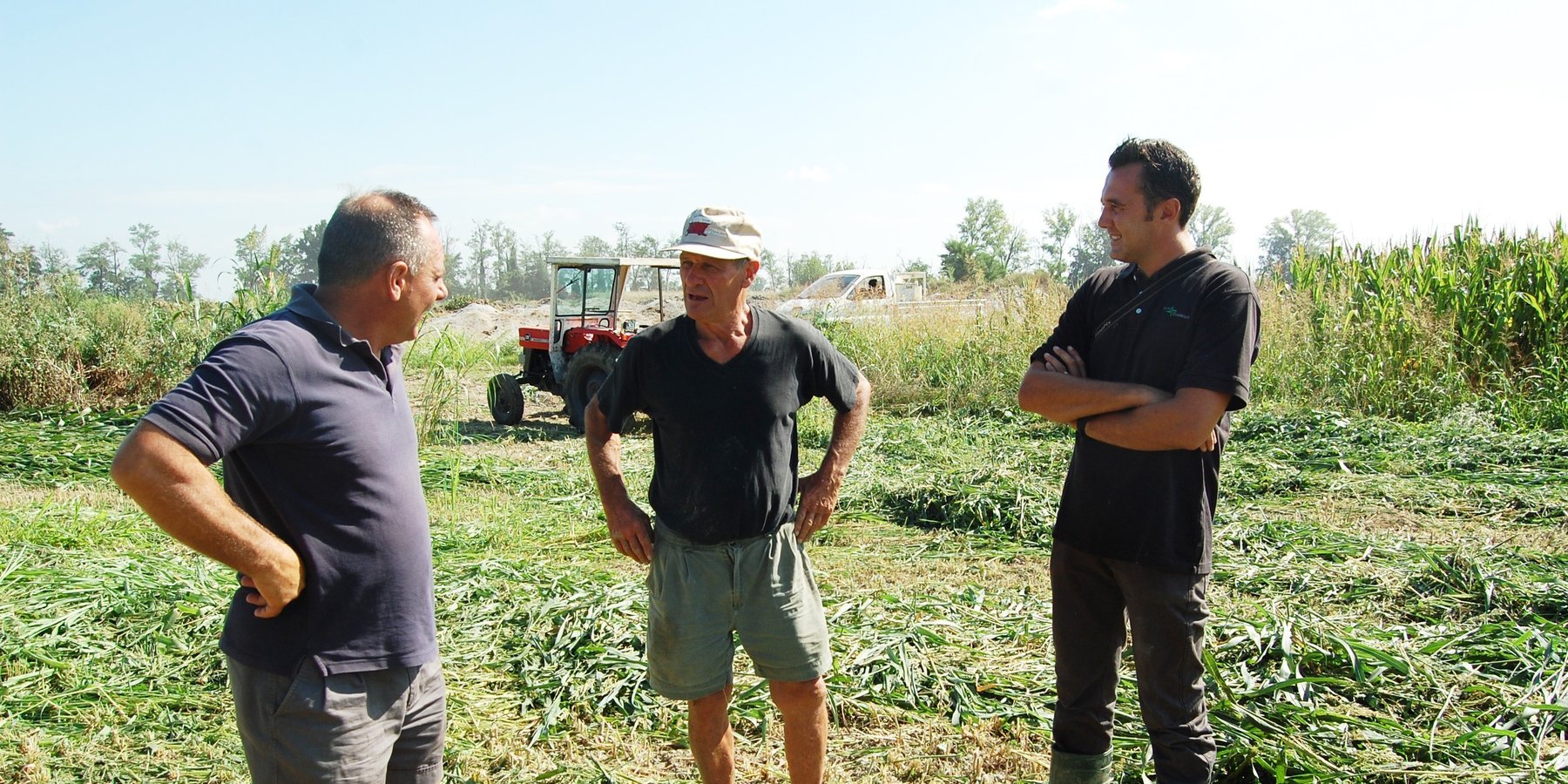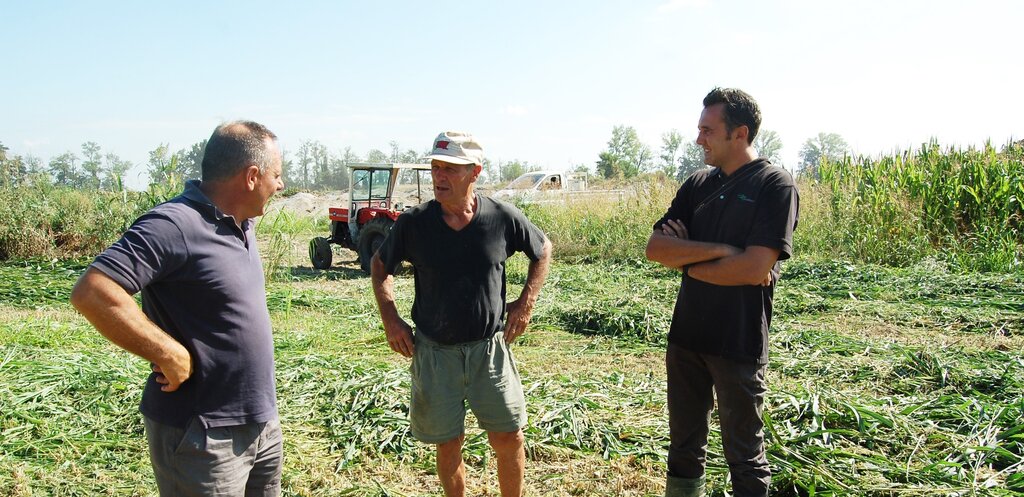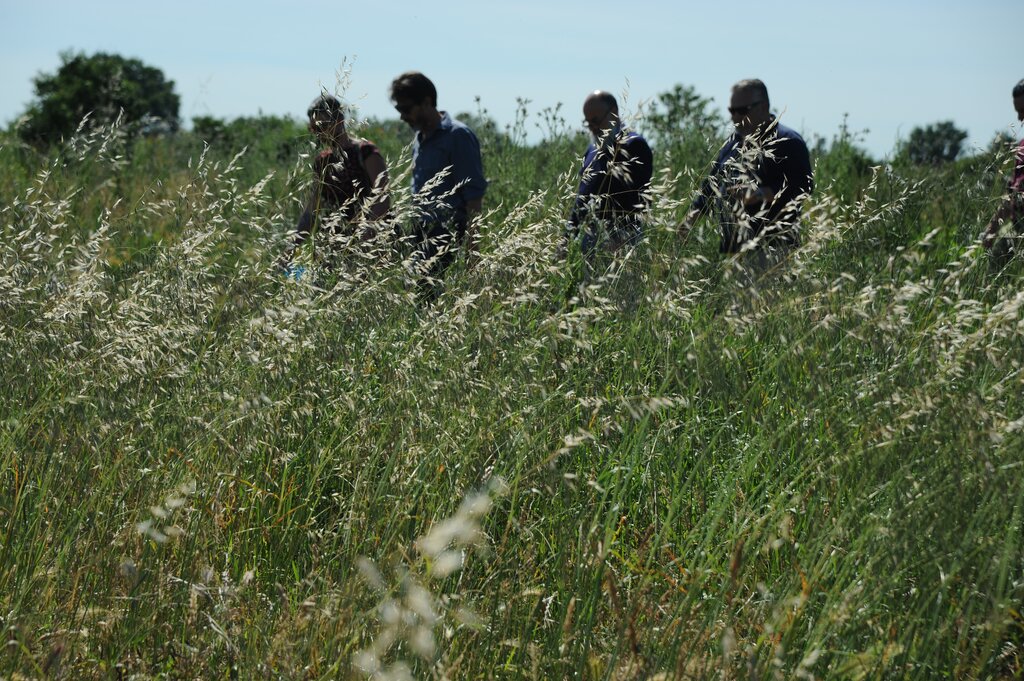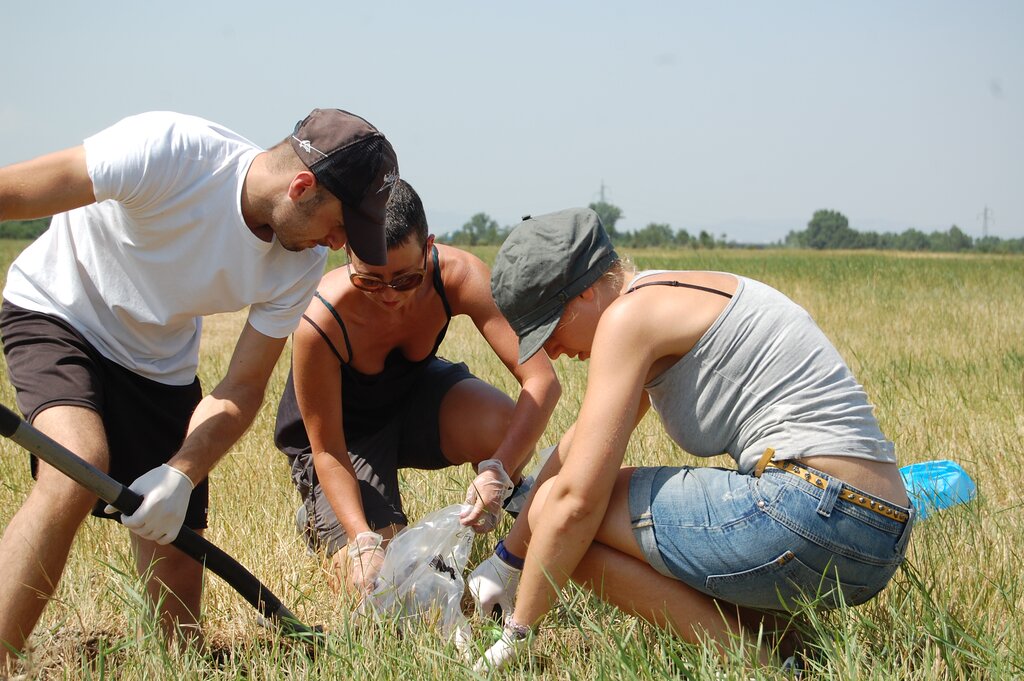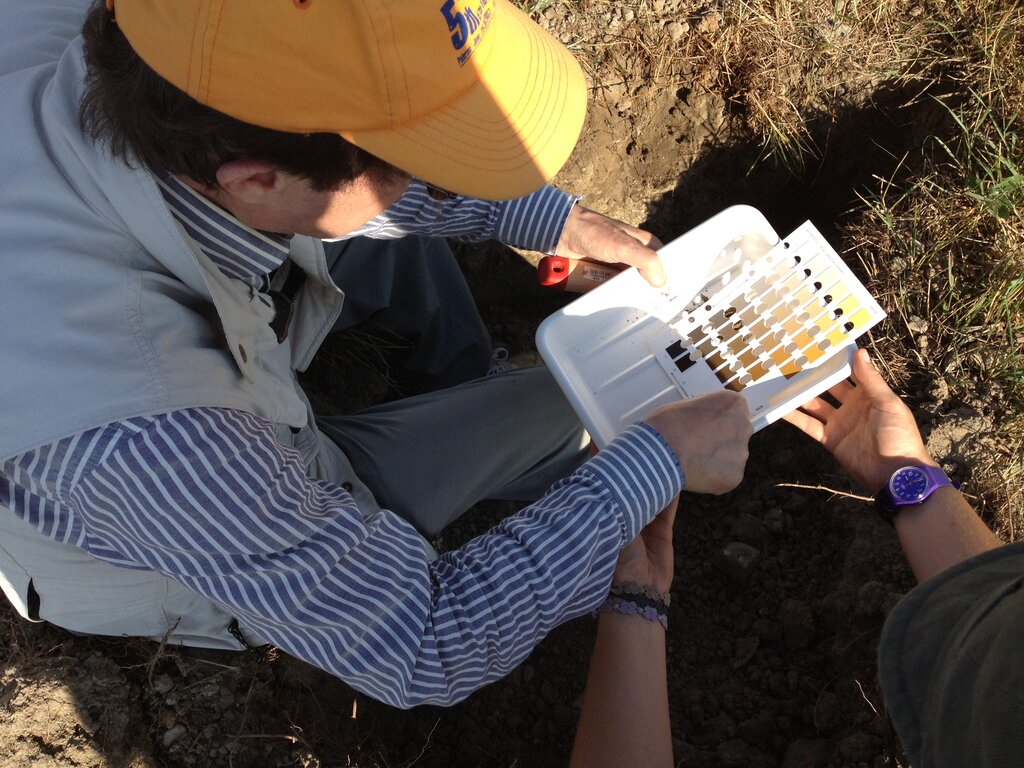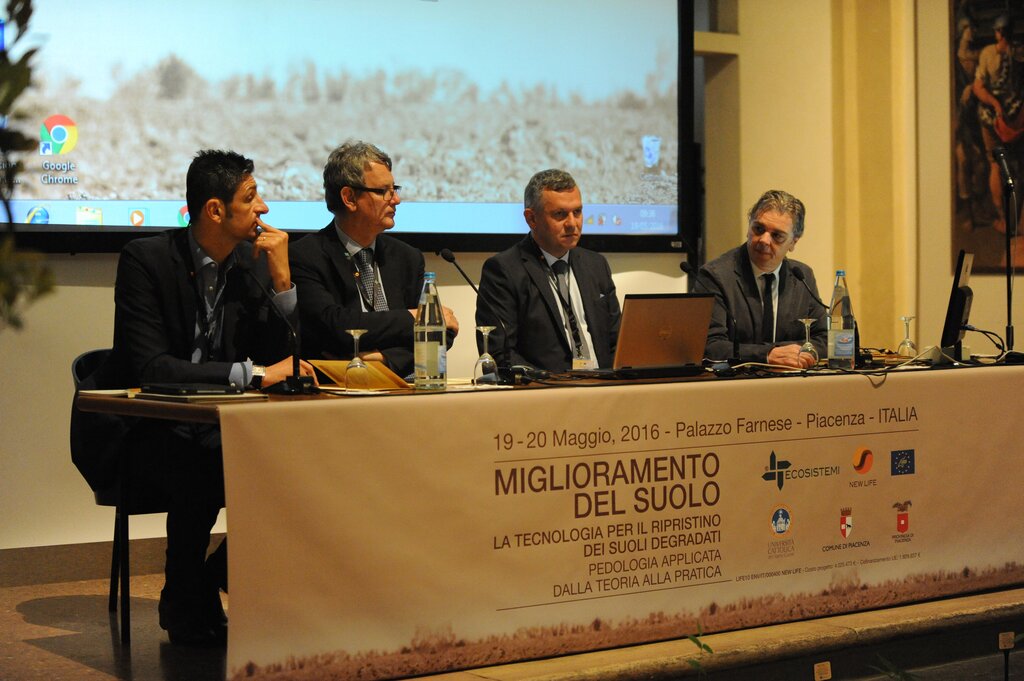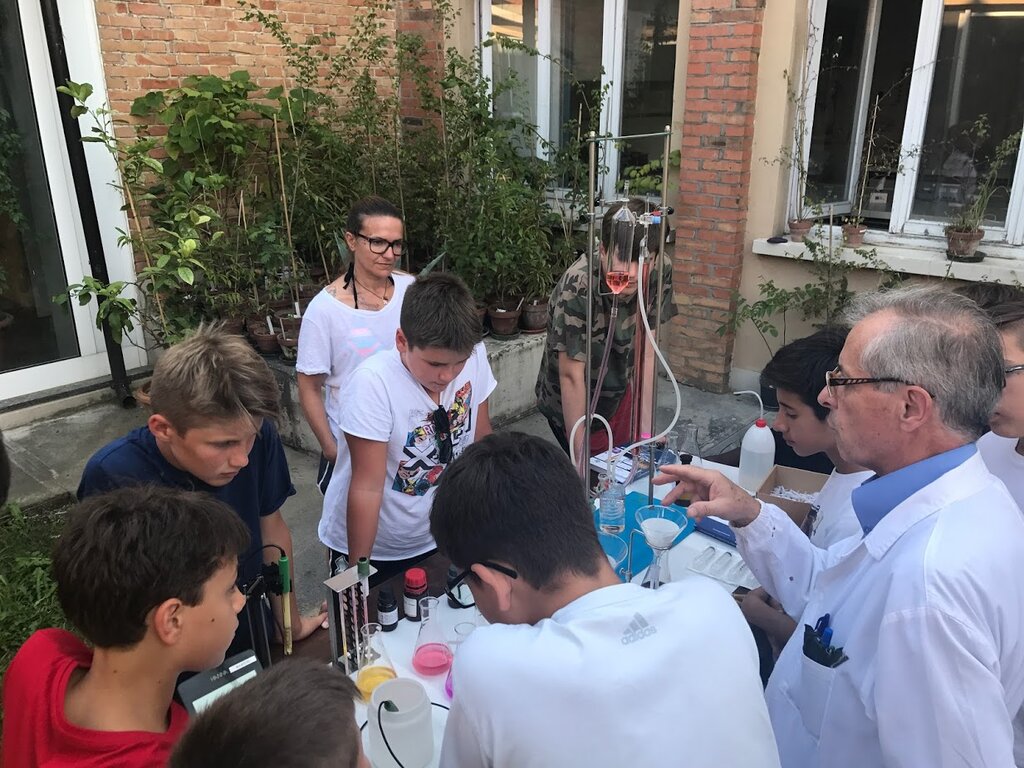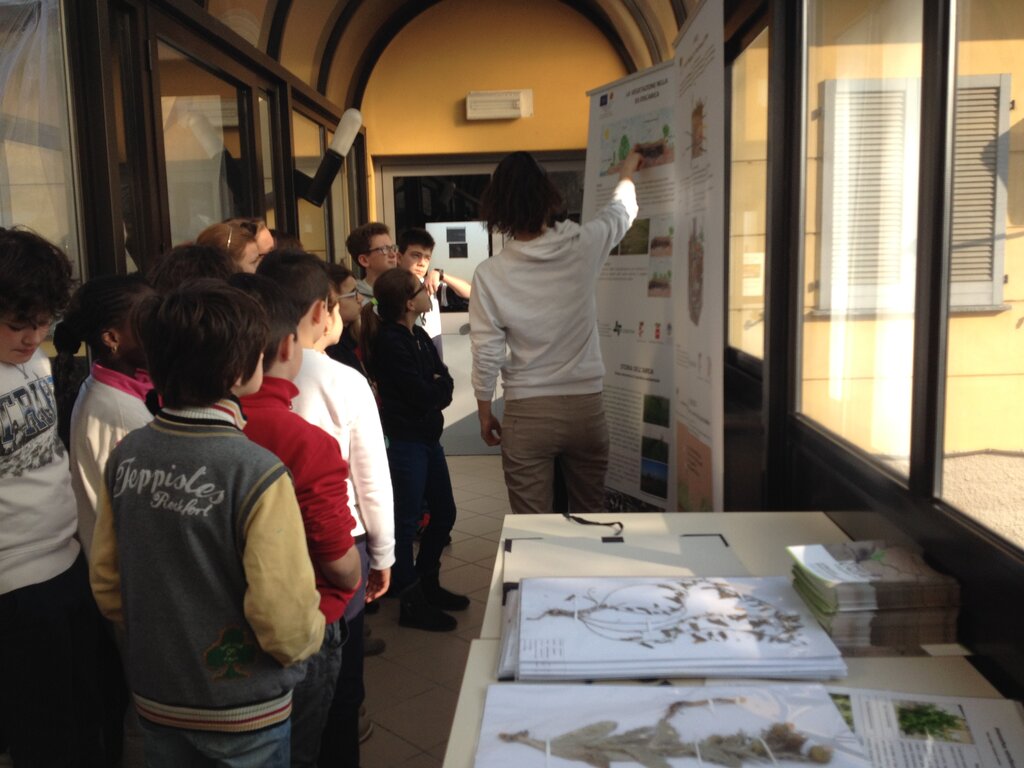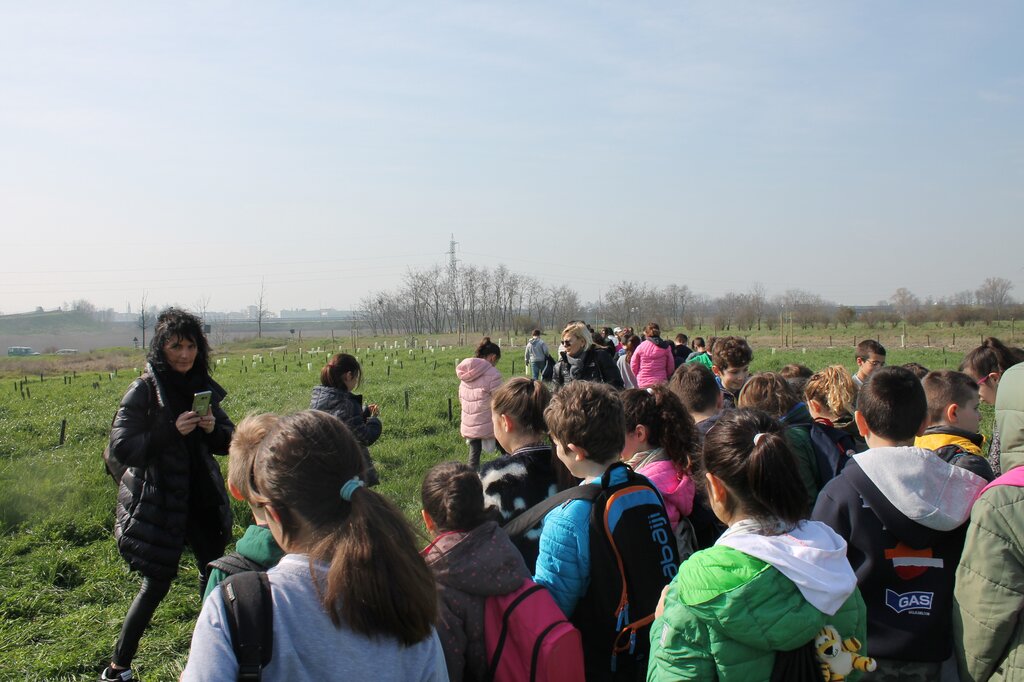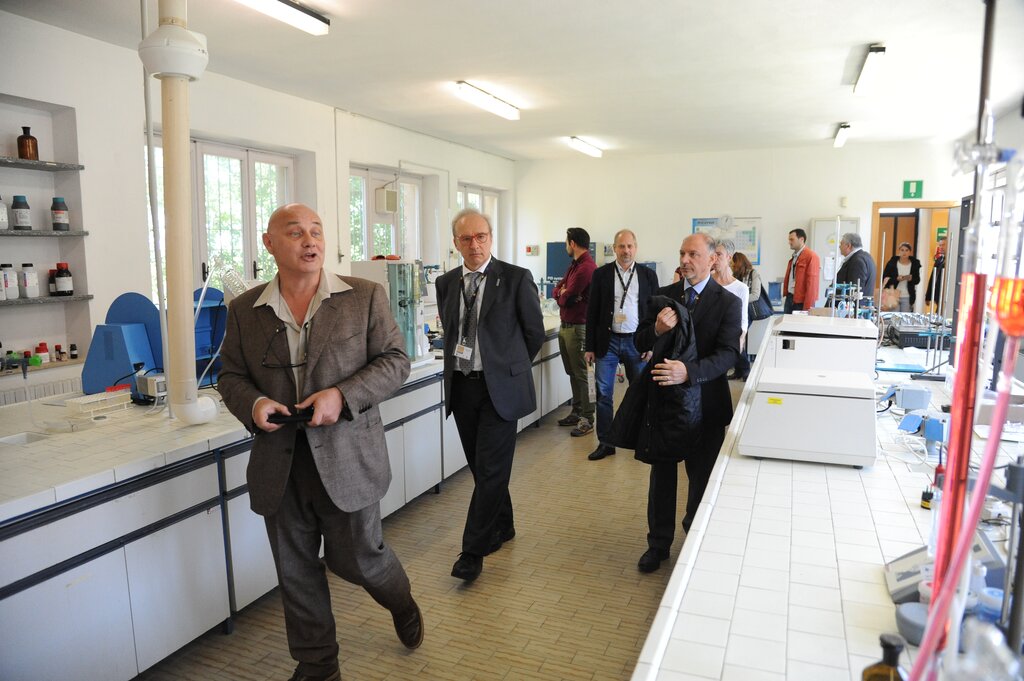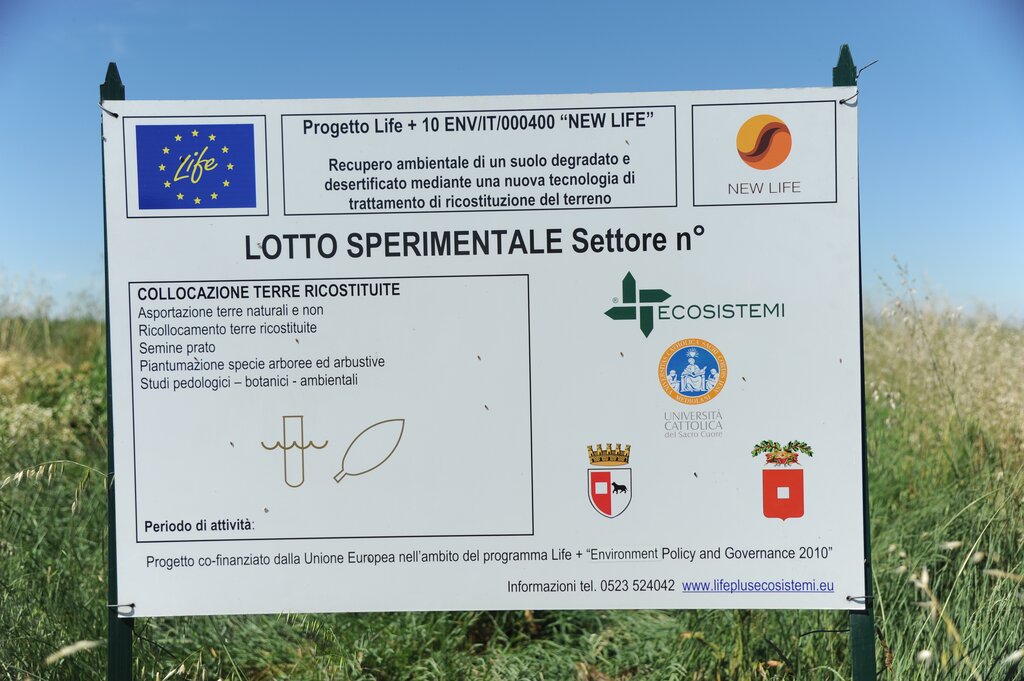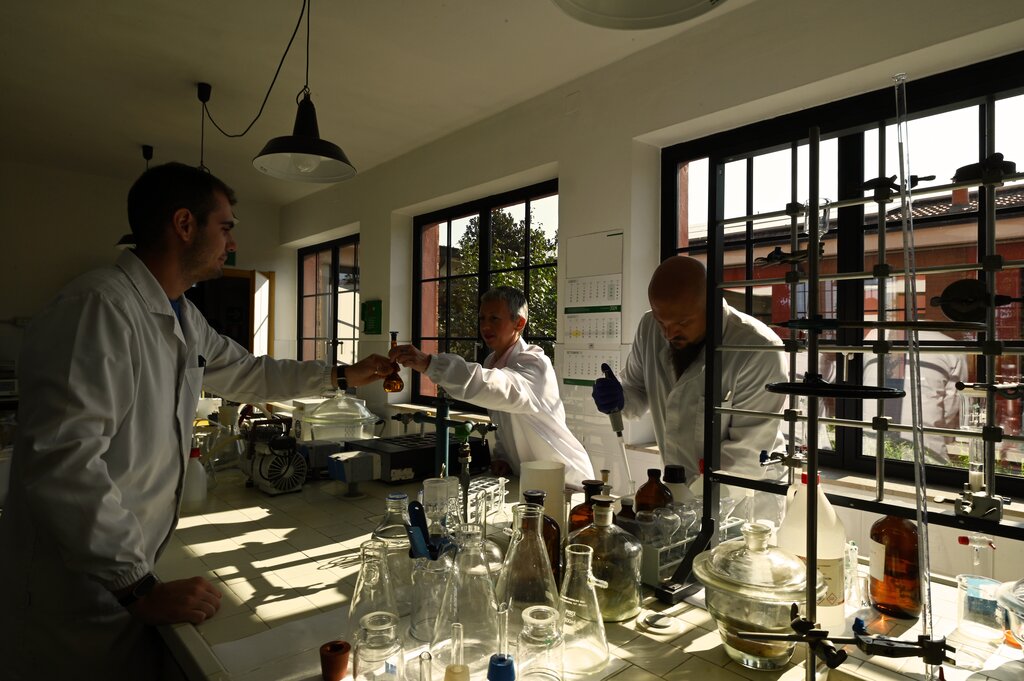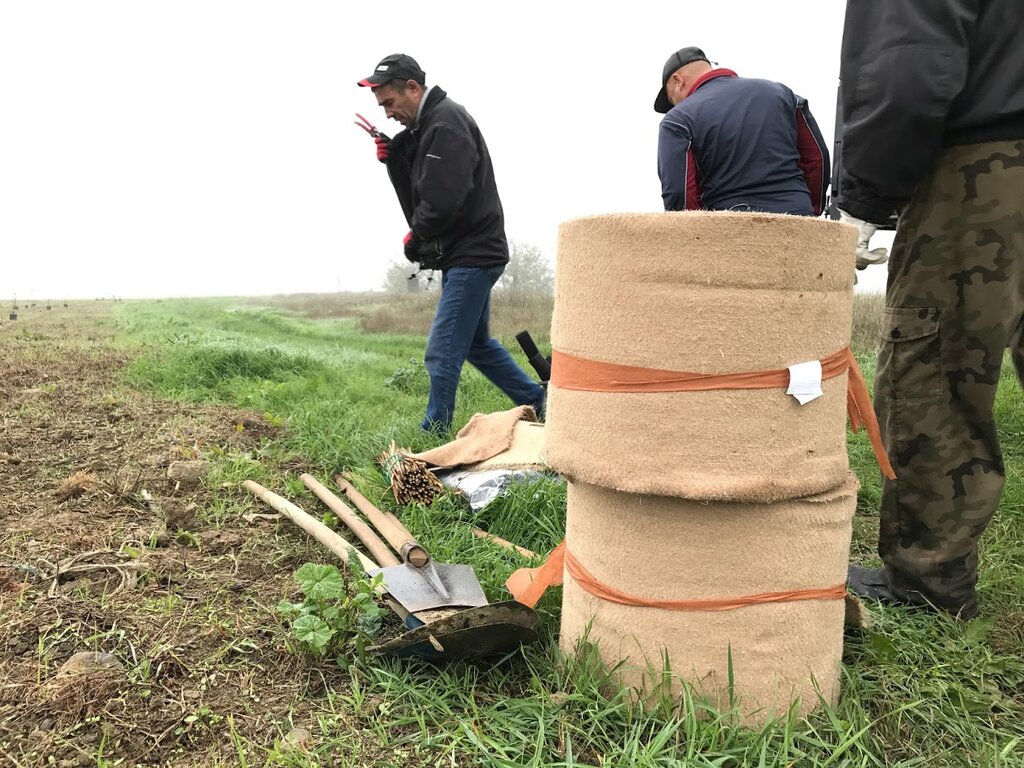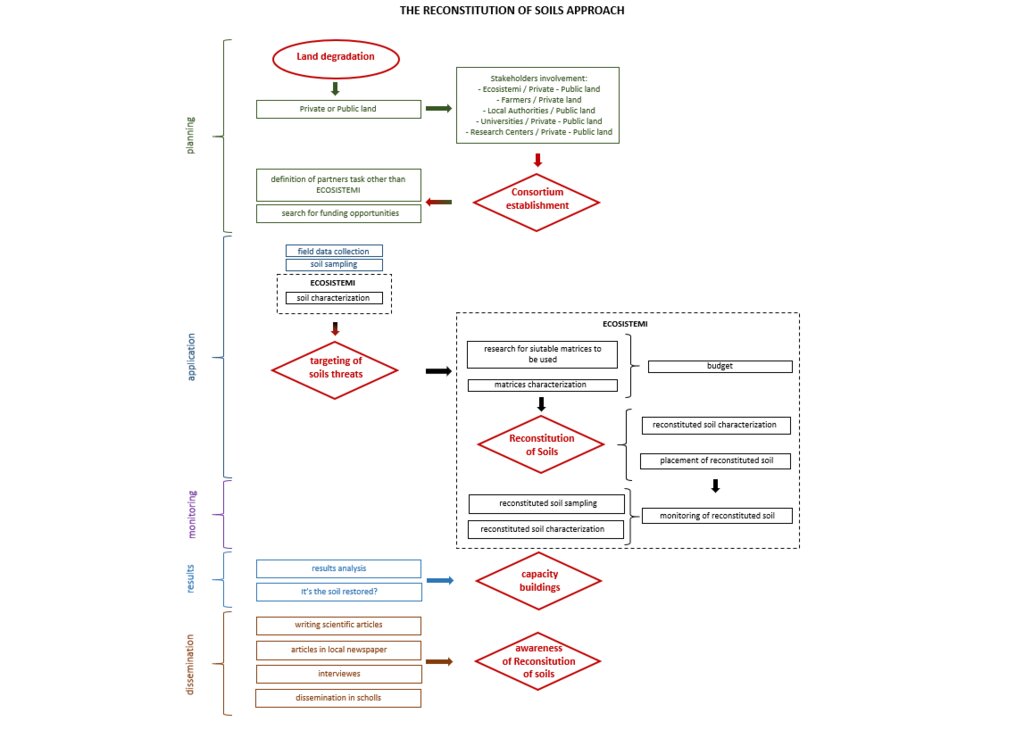Reconstitution of Soils Approach [Italy]
- Creation:
- Update:
- Compiler: Chiara Cassinari
- Editor: –
- Reviewers: William Critchley, Rima Mekdaschi Studer
Ricostituzione
approaches_7355 - Italy
View sections
Expand all Collapse all1. General information
1.2 Contact details of resource persons and institutions involved in the assessment and documentation of the Approach
Key resource person(s)
land user:
Manfredi Paolo
m.c.m. Ecosistemi
Loc. Faggiola snc, 29027 Podenzano
Italy
SLM specialist:
Name of project which facilitated the documentation/ evaluation of the Approach (if relevant)
NEW LIFE Project (NEW LIFE)Name of the institution(s) which facilitated the documentation/ evaluation of the Approach (if relevant)
m.c.m Ecosistemi (m.c.m Ecosistemi)1.3 Conditions regarding the use of data documented through WOCAT
When were the data compiled (in the field)?
05/09/2023
The compiler and key resource person(s) accept the conditions regarding the use of data documented through WOCAT:
Yes
1.4 Reference(s) to Questionnaire(s) on SLM Technologies

Reconstitution of Soils [Italy]
Reconstitution of soils is a pedotechnique based on the treatment of organic and non-organic pedomaterials to achieve benefits in areas with barren, degraded, desertified and/ or sealed soils.
- Compiler: Chiara Cassinari
2. Description of the SLM Approach
2.1 Short description of the Approach
Reconstitution of soils is a patented pedotechnology that brings benefits to degraded soils. Simultaneously, it raises awareness of the potential of restoring soil fertility through recycling. The approach starts with the identification of the soil issue, and the technology is then planned, implemented and promoted through a consortium.
2.2 Detailed description of the Approach
Detailed description of the Approach:
The approach to reconstitution of soils is guided and led by m.c.m. Ecosistemi in its role as a consortium leader, together with land users, soil experts and local authorities. Reconstitution of soils is a patented pedotechnology that brings benefits to degraded, barren and desertified soils. Simultaneously, it helps raise awareness of the potential of recycling in restoration of soil as part of a “circular economy”.
The technology of soil reconstitution arose about 20 years ago from a concept, later patented by Ecosistemi, to fight soil degradation through the guiding principle of recycling environmental suitable waste. From its conception until now, reconstitution has been improved and implemented through a consortium involving Ecosistemi, soil scientists, land users, farmers, and local authorities – while being supported by various national, European and international research projects.
To explain the approach in detail, one project more than any other has been central to demonstrating and promoting the technology: the EU project “New Life” (https://www.lifeplusecosistemi.eu/). The planning, application and monitoring phases under the New Life project are the same each time that reconstitution is the tool employed to restore an area.
To take one example under the New Life project, the intervention area was about 20 hectares in the Trebbia River Park (in the city of Piacenza, Italy). In the 1980s it was a landfill site for solid urban waste. When the landfill was closed, the waste was covered by a thin layer of soil on which rehabilitation efforts were carried out though planting trees and shrubs. However, these interventions, due to the poor quality of the soil used, failed, leaving the area in a state of continued degradation.
Some years later, after evaluating the state of the area, Ecosistemi proposed reconstitution as a potential tool for land restoration. As the land was a public area and large, it was necessary to find funding to support the restoration. Ecosistemi therefore contacted the University of Piacenza and local authorities to create a consortium, and after discussions Ecosistemi searched for funding opportunities. A proposal was drawn up for a restoration project which was then presented for funding under a EU programme and approved (https://www.lifeplusecosistemi.eu/). This then provided the go-ahead for successful restoration to form a recreational area.
Based this experience, the prototype for the approach to reconstitution of soils can be summarized as:
1) Identification of degraded land - through alerts from farmers and/ or local authorities and/ or universities;
2) Creation of a consortium;
3) Searching for funding opportunities (by the consortium), but if no funding is found, Ecosistemi prepares a profit and loss account using different scenarios to evaluate whether restoration is viable;
4) Assessing the soils threats to be solved - by the consortium;
5) Ecosistemi develops plans for implementation, based on core principles and practices of soil restoration;
6) Application of the restoration technology by Ecosistemi;
7) Monitoring of results by Ecosistemi and soil experts of the consortium;
8) Dissemination of the results through scientific articles, articles in local newspapers, interviews and in schools - by the consortium.
2.3 Photos of the Approach
2.4 Videos of the Approach
Comments, short description:
youtube video
https://www.youtube.com/watch?v=16kRp5AdhcY
Description of Reconstitution Pedotechnology
Date:
15/01/2025
Name of videographer:
Paolo Manfredi
Comments, short description:
youtube video
https://www.youtube.com/watch?v=YRkxxzOHfTo
Reconstitution Approach on outcropping
Date:
22/01/2025
Name of videographer:
Paolo Manfredi
2.5 Country/ region/ locations where the Approach has been applied
Country:
Italy
Region/ State/ Province:
Emilia Romagna, Piacenza; Piemonte, Vicolungo
Map
×2.6 Dates of initiation and termination of the Approach
Indicate year of initiation:
2011
Comments:
The Reconstitution of Soils Approach is constantly evolving
2.7 Type of Approach
- research, growth, innovation
2.8 Main aims/ objectives of the Approach
The reconstitution of soils approach, whose guiding principle is the "circular economy", copes with land degradation and desertification. The approach's aim is to support the implementation of the "reconstitution of soils" technology , creating a consortium of soil experts, local authorities and people with the aim of restoring degraded land, sealed soils, soils with low chemical and/ or physical fertility.
2.9 Conditions enabling or hindering implementation of the Technology/ Technologies applied under the Approach
social/ cultural/ religious norms and values
- enabling
Because of soil health concerns, there is awareness of soil threats, increase of yield, increase of tillable area, wealth, and environmental health and these are increased through restoration of land by reconstitution.
availability/ access to financial resources and services
- enabling
The availability of funding for regional, national or international projects can help implement the approach because of all the implementations (increasing circular economy testing with new suitable waste and studying ad-hoc soil restoration according to the soil issue to be solved) needs subsides. If no funding is found a profit and loss account is made to evaluate if the restoration can be made exploring different scenarios.
collaboration/ coordination of actors
- enabling
Local farmers and authorities, whenever the skills of Ecosistemi and of reconstitution of soils is needed, are open to collaboration and becoming part of a consortium.
policies
- enabling
Policies concerning strategies on soil desertification enable the approach.
land governance (decision-making, implementation and enforcement)
- enabling
Land governance enables people to become aware of soil threats and to join the approach as one way to solve them.
knowledge about SLM, access to technical support
- enabling
Knowledge about SLM and the access to technical support is useful to take examples for implementing the approach.
3. Participation and roles of stakeholders involved
3.1 Stakeholders involved in the Approach and their roles
- SLM specialists/ agricultural advisers
m.c.m. Ecosistemi company
Lead role in the approach because of Reconstitution of Soils is patented by Ecosistemi
- researchers
Soil experts, m.c.m. Ecosistemi research laboratory
Studies about soils, monitoring reconstituted soils
- private sector
Ecosistemi company and the sectors producing suitable waste to be used
Ecosistemi tests suitable waste to be used in Reconstitution of Soils
- local government
Municipality
Local Government is the key to create a connection with local people, to find areas to be restored and for dissemination of the results obtained through SLM Technology
- national government (planners, decision-makers)
Planners and decision-makers
Their roles are to plan, support and encourage actions for soil restoration
If several stakeholders were involved, indicate lead agency:
m.c.m. Ecosistemi
3.2 Involvement of local land users/ local communities in the different phases of the Approach
| Involvement of local land users/ local communities | Specify who was involved and describe activities | |
|---|---|---|
| initiation/ motivation | interactive | Iniziation of the approach started from the identification of the threat to be solved and so local users are key actors |
| planning | interactive | Planning is made by all the stakeholders of the approach leading by Ecosistemi |
| implementation | none | Implementation is carried out only by m.c.m. Ecosistemi |
| monitoring/ evaluation | interactive | They take part in monitoring the results about for example their perception of a restored land after the application of the approach |
3.3 Flow chart (if available)
3.4 Decision-making on the selection of SLM Technology/ Technologies
Specify who decided on the selection of the Technology/ Technologies to be implemented:
- all relevant actors, as part of a participatory approach
Explain:
Ecosistemi, as it is the leader of the approach, decides about the implementation of Reconstitution of Soils Approach because only they have the whole knowledge about Reconstitution of Soils and soil threats
Specify on what basis decisions were made:
- evaluation of well-documented SLM knowledge (evidence-based decision-making)
- research findings
- personal experience and opinions (undocumented)
4. Technical support, capacity building, and knowledge management
4.1 Capacity building/ training
Was training provided to land users/ other stakeholders?
Yes
Specify who was trained:
- field staff/ advisers
If relevant, specify gender, age, status, ethnicity, etc.
Gender is inclusive; everyone can be trained
Form of training:
- on-the-job
- demonstration areas
- public meetings
Subjects covered:
Natural soil management, organic matter conservation, reconstituted soil management, agricultural management
4.2 Advisory service
Do land users have access to an advisory service?
Yes
Specify whether advisory service is provided:
- on land users' fields
- at permanent centres
Describe/ comments:
Training on natural and reconstituted soils management, on soil degradation processes, on the production process used by company providing waste to be tested in the approach
4.3 Institution strengthening (organizational development)
Have institutions been established or strengthened through the Approach?
- yes, moderately
Specify the level(s) at which institutions have been strengthened or established:
- local
- regional
Describe institution, roles and responsibilities, members, etc.
Local and regional institutions such as municipality and trade associations, have the roles of the dissemination of the results through people and of financial support
Specify type of support:
- financial
- dissemination
Give further details:
Search for funding opportunities (regional projects): dissemination of the results through articles in local newspapers and/ or interviews
4.4 Monitoring and evaluation
Is monitoring and evaluation part of the Approach?
Yes
Comments:
Soil monitoring and evaluation are the only way to know if the technology is able to solve soil problem to cope with. After that the obtained results can be disseminated and so to eventually find a new area to start a new implementation
If yes, is this documentation intended to be used for monitoring and evaluation?
Yes
Comments:
Every implementation is the base for a new project and to increase the development of the approach
4.5 Research
Was research part of the Approach?
Yes
Specify topics:
- economics / marketing
- ecology
- technology
Give further details and indicate who did the research:
All the research is be done by m.c.m. Ecosistemi sometimes together with local institutions and/ or soil experts; the topics of the research are: chemico-physical and microbiological soils parameters, soils uses, circular economy, soil management and yield, laboratory soil analysis, suitable waste, vegetation indices, and soil fertility.
5. Financing and external material support
5.1 Annual budget for the SLM component of the Approach
If precise annual budget is not known, indicate range:
- 100,000-1,000,000
Comments (e.g. main sources of funding/ major donors):
this annual budget originates from New Life project (https://www.lifeplusecosistemi.eu/) and it covers the restoration of a 10 ha land, involving 8-10 people, and all the other associated aspects of the approach.
5.2 Financial/ material support provided to land users
Did land users receive financial/ material support for implementing the Technology/ Technologies?
Yes
If yes, specify type(s) of support, conditions, and provider(s):
Subsidies from funding programs based on a research project
5.3 Subsidies for specific inputs (including labour)
- labour
| To which extent | Specify subsidies |
|---|---|
| partly financed | Funding programs |
- equipment
| Specify which inputs were subsidised | To which extent | Specify subsidies |
|---|---|---|
| tools | partly financed | Founding programs |
| pilot laboratory reconstituted plant | partly financed | Subsides by funding programs are useful if a project needs a characteristic type of reconstitution or if new waste are to be tested and the amount of them are little, it could be necessary to produce a pilot laboratory reconstitution plant |
If labour by land users was a substantial input, was it:
- paid in cash
5.4 Credit
Was credit provided under the Approach for SLM activities?
No
5.5 Other incentives or instruments
Were other incentives or instruments used to promote implementation of SLM Technologies?
No
6. Impact analysis and concluding statements
6.1 Impacts of the Approach
Did the Approach empower local land users, improve stakeholder participation?
- No
- Yes, little
- Yes, moderately
- Yes, greatly
The creation of consortium of stakeholders is very useful for brainstorming about different ideas and to join skills to solve soils threats
Did the Approach enable evidence-based decision-making?
- No
- Yes, little
- Yes, moderately
- Yes, greatly
The results obtain using the approach are the basis for future implementation of the technology
Did the Approach help land users to implement and maintain SLM Technologies?
- No
- Yes, little
- Yes, moderately
- Yes, greatly
The approach is the core concept underpinning implementation of the technology
Did the Approach improve coordination and cost-effective implementation of SLM?
- No
- Yes, little
- Yes, moderately
- Yes, greatly
Thanks to the approach and the establishment of a consortium, a project for funding programs can be presented
Did the Approach mobilize/ improve access to financial resources for SLM implementation?
- No
- Yes, little
- Yes, moderately
- Yes, greatly
The approach can be tested in EU and Horizon projects
Did the Approach improve knowledge and capacities of land users to implement SLM?
- No
- Yes, little
- Yes, moderately
- Yes, greatly
The consortium is useful to connect skills and so to implement the technology
Did the Approach improve knowledge and capacities of other stakeholders?
- No
- Yes, little
- Yes, moderately
- Yes, greatly
Joining skills is always a way to improve knowledge
Did the Approach build/ strengthen institutions, collaboration between stakeholders?
- No
- Yes, little
- Yes, moderately
- Yes, greatly
Working together for the same aim strengthen collaboration
Did the Approach encourage young people/ the next generation of land users to engage in SLM?
- No
- Yes, little
- Yes, moderately
- Yes, greatly
The dissemination of results obtain encourage the next generation of farmers to engage in reconstitution of soils
Did the Approach lead to improved food security/ improved nutrition?
- No
- Yes, little
- Yes, moderately
- Yes, greatly
The implementation of the technology through the approach improves food security meaning increase of soil fertility and yields, the gain over new tillable areas
Did the Approach lead to more sustainable use/ sources of energy?
- No
- Yes, little
- Yes, moderately
- Yes, greatly
Meaning the use of suitable waste, part of a the circular economy
Did the Approach improve the capacity of the land users to adapt to climate changes/ extremes and mitigate climate related disasters?
- No
- Yes, little
- Yes, moderately
- Yes, greatly
Nowadays the approach is tested to implement reconstitution of soils to counter the negative impact of alluvial sediments on physical properties of agricultural soils affected by flooding
6.2 Main motivation of land users to implement SLM
- increased production
The guiding principles of the approach together with the circular economy are to counter land degradation and to improve soil fertility also reducing the use of fertilizers and irrigation water
- reduced land degradation
The guiding principles of the approach together with the circular economy are to counter land degradation and to improve soil fertility also reducing the use of fertilizers and irrigation water
- reduced risk of disasters
The recent flooding affecting some areas of Italy will lead to improve the reconstitution of soils technology
- enhanced SLM knowledge and skills
Joining skills through a consortium is a way to improve knowledge
6.3 Sustainability of Approach activities
Can the land users sustain what has been implemented through the Approach (without external support)?
- yes
If yes, describe how:
The whole process, thanks to the monitoring phase (studies of the successful results), can be upscaled because every implementation of the technology becomes the starting point for a new challenge
6.4 Strengths/ advantages of the Approach
| Strengths/ advantages/ opportunities in the land user’s view |
|---|
|
Strengths: - to join different skills; - promotion of the technology |
|
Advantages: - a consortium has a greater chance of finding funding |
|
Opportunities: - awareness raising about the connection of circular economy and soil restoration; - to create a network of soil experts to counter soil degradation |
| Strengths/ advantages/ opportunities in the compiler’s or other key resource person’s view |
|---|
|
Strengths: - join skills |
|
Advantages: - to promote the technology in scientific community and farmers |
|
Opportunities: - dissemination to test the approach in different land - reusing different suitable waste thanks to agro-industrial connection - to create a network of soil experts |
6.5 Weaknesses/ disadvantages of the Approach and ways of overcoming them
| Weaknesses/ disadvantages/ risks in the land user’s view | How can they be overcome? |
|---|---|
|
Weaknesses: - Italian bureaucracy regarding the use of waste |
to explain to local authorities that all the waste used are environmental suitable and always monitored |
|
Disadvantages: - long time from the submission of the project to commission evaluation |
making a test plot using a pilot reconstitution plant |
|
Risks: - financial difficult if the consortium and the project presented for funding is rejected |
profit and loss account to evaluate if the restoration can be made exploring different scenarios |
| Weaknesses/ disadvantages/ risks in the compiler’s or other key resource person’s view | How can they be overcome? |
|---|---|
|
Weaknesses: - financial difficult if the consortium and the project presented for funding is rejected |
profit and loss account to evaluate if different scenarios |
|
Disadvantages: - time from the submission of the project to commission evaluation |
pilot test in a smaller scale |
|
Risks: - Italian bureaucracy regarding use of waste |
to explain to local authorities that all the waste used are environmental suitable and always monitored |
7. References and links
7.1 Methods/ sources of information
- field visits, field surveys
field surveys - more than 5
- interviews with land users
regular
7.2 References to available publications
Title, author, year, ISBN:
The reconstitution pedotechnique: Applications, Manfredi P., Cassinari C., Trevisan M., 10.1016/j.eti.2021.102246
Available from where? Costs?
Scientific Journal
Title, author, year, ISBN:
The reconstitution: environmental restoration assessment by means of LCC and FCC, 10.6092/issn.2281-4485/8500
Available from where? Costs?
Scientific Journal
Title, author, year, ISBN:
Trees and shrubs monitoring using an ecological approach: the conclusion of the restoration project of Borgotrebbia landfill (Northern Italy), Manfredi P., Cassinari C., Meloni F., Stragliati L., Trevisan M., Giupponi L., 10.31031/EAES.2019.06.000635
Available from where? Costs?
Scientific Journal
Title, author, year, ISBN:
A new technology to restore soil fertility: Reconstitution, Manfredi P., Cassinari C., Francaviglia R., Trevisan M., 10.12871/00021857201933
Available from where? Costs?
Scientific Journal
Title, author, year, ISBN:
Growth and yield response of tomato (Solarium lycopersicum L.) to soil reconstitution technology, Manfredi P., Cassinari C., Gatti M., Trevisan M., 10.12871/00021857201916
Available from where? Costs?
Scientific Journal
Title, author, year, ISBN:
Test on the effects of reconstituted soil on emergency speed and root growth in maize, Manfredi P., Cassinari C., Salvi R., Battaglia R., Marocco A., Trevisan M., 10.1515/contagri-2018-0035
Available from where? Costs?
Scientific Journal
Title, author, year, ISBN:
Osservazione di Lycogala terrestre Fr. e Stemonitis axifera (Bull.) T. Macr. su suoli ricostituiti sabbiosi, Manfredi P., Salvi R., Bersan M., Cassinari C., Marocco A., Trevisan M.
Available from where? Costs?
Scientific Journal
Title, author, year, ISBN:
Relationship between hydraulic properties and plant coverage of the closed-landfill soils in Piacenza (Po Valley, Italy), Cassinari C., Manfredi P., Giupponi L., Trevisan M., Piccini C., 10.5194/se-6-929-2015
Available from where? Costs?
Scientific Journal
Title, author, year, ISBN:
Soil temperature fluctuations in a degraded and in a reconstituted soil, Manfredi P., Cassinari C., Trevisan M., ISBN 20385625
Available from where? Costs?
Scientific Journal
Title, author, year, ISBN:
Confronto tra dati produttivi di mais coltivato su terre ricostituite e terre naturali, Manfredi P., Tassi D., Cassinari C.
Available from where? Costs?
Scientific Journal
7.3 Links to relevant information which is available online
Title/ description:
Ecosistemi web site
URL:
www.mcmecosistemi.com
Title/ description:
Paolo Manfredi ResearchGate
URL:
https://www.researchgate.net/profile/Paolo-Manfredi-2
Title/ description:
Chiara Cassinari ResearchGate
URL:
https://www.researchgate.net/profile/Chiara-Cassinari
Title/ description:
All the publications with DOI mentioned above
Title/ description:
Ecosistemi YouTube channel
URL:
https://www.youtube.com/channel/UCOloFv-BLgvIVt9kBZuZyZg
Links and modules
Expand all Collapse allLinks

Reconstitution of Soils [Italy]
Reconstitution of soils is a pedotechnique based on the treatment of organic and non-organic pedomaterials to achieve benefits in areas with barren, degraded, desertified and/ or sealed soils.
- Compiler: Chiara Cassinari
Modules
No modules


